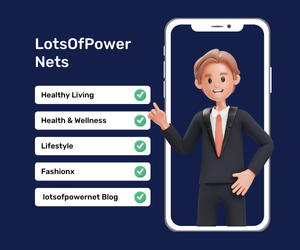Anxiety and panic attacks are increasingly common mental health challenges in today’s fast-paced world. While occasional stress or worry is normal, persistent anxiety or sudden panic attacks can interfere with daily life, relationships, and overall well-being. The good news is that there are effective therapy options available that can help manage and reduce these symptoms. Understanding these therapies can empower you to make informed choices and regain control over your mental health.
Understanding Anxiety and Panic Attacks
Before exploring therapy options, it’s important to understand what anxiety and panic attacks are. Anxiety is a feeling of worry, nervousness, or unease about future events, often accompanied by physical symptoms like increased heart rate, sweating, or tension. Panic attacks, on the other hand, are sudden episodes of intense fear or discomfort, often with symptoms such as heart palpitations, shortness of breath, dizziness, or a feeling of losing control.
While the causes of anxiety and panic attacks vary—ranging from genetics, brain chemistry, and traumatic experiences to lifestyle stressors—effective therapies can help manage these conditions.
1. Cognitive Behavioral Therapy (CBT)
Cognitive Behavioral Therapy is one of the most researched and widely recommended therapies for anxiety and panic attacks. CBT focuses on identifying and challenging negative thought patterns that trigger anxiety. By changing the way you think about and respond to stressful situations, CBT helps reduce the intensity and frequency of panic attacks.
CBT techniques often include:
- Cognitive restructuring: Recognizing and reframing irrational thoughts.
- Exposure therapy: Gradually confronting feared situations to reduce avoidance behaviors.
- Relaxation techniques: Learning deep breathing, progressive muscle relaxation, or mindfulness exercises to calm the body during anxious moments.
Studies show that CBT can provide long-term relief from anxiety symptoms and help prevent future panic attacks.
2. Acceptance and Commitment Therapy (ACT)
Acceptance and Commitment Therapy is another effective option that encourages individuals to accept their thoughts and feelings without judgment. Instead of trying to eliminate anxiety entirely, ACT teaches you to live a meaningful life despite these feelings.
Key components of ACT include:
- Mindfulness exercises: Focusing on the present moment without trying to change it.
- Values clarification: Understanding what matters most in life and committing to actions aligned with those values.
- Cognitive defusion: Learning to distance yourself from anxious thoughts so they have less control over your behavior.
ACT is particularly useful for people who struggle with chronic anxiety and panic disorders, as it emphasizes resilience and self-compassion.
3. Exposure Therapy
Exposure therapy is a technique often integrated with CBT and involves gradually confronting the situations, places, or sensations that trigger anxiety or panic attacks. By repeatedly facing fears in a controlled and safe environment, your brain can learn to reduce the fear response over time.
For example, someone with social anxiety might start by practicing small social interactions and gradually progress to larger group settings. The goal is not to eliminate fear but to increase confidence and reduce avoidance behaviors.
4. Mindfulness-Based Stress Reduction (MBSR)
Mindfulness-Based Stress Reduction is a structured program that combines meditation, yoga, and mindfulness practices to reduce stress and anxiety. By training your mind to focus on the present moment, MBSR helps reduce the intensity of anxious thoughts and improves emotional regulation.
Benefits of MBSR include:
- Decreased frequency of panic attacks
- Improved coping strategies for stress
- Enhanced overall emotional well-being
Regular mindfulness practice can also help break the cycle of worry and rumination that fuels anxiety.
5. Medication-Assisted Therapy
For some individuals, therapy alone may not be sufficient, and medication can be an effective adjunct treatment. Common medications for anxiety and panic disorders include:
- Selective serotonin reuptake inhibitors (SSRIs): Such as sertraline or fluoxetine, which help regulate mood.
- Benzodiazepines: Such as lorazepam or alprazolam, used for short-term relief during severe panic attacks.
- Buspirone: A non-habit-forming anti-anxiety medication for generalized anxiety.
It’s important to consult with a qualified healthcare provider to determine if medication is appropriate and to discuss potential side effects.
6. Lifestyle and Self-Care Strategies
While therapy and medication are essential, lifestyle adjustments play a crucial role in managing anxiety and panic attacks. Some effective strategies include:
- Regular physical activity: Exercise releases endorphins that naturally reduce stress.
- Healthy diet: Nutrient-rich foods can support brain health and emotional stability.
- Adequate sleep: Poor sleep can worsen anxiety symptoms.
- Stress management techniques: Journaling, meditation, deep breathing, and spending time in nature can reduce overall stress levels.
These habits complement formal therapy and help maintain long-term mental health.
Choosing the Right Therapy
Selecting the best therapy option depends on your symptoms, preferences, and lifestyle. Many people benefit from a combination of therapies, such as CBT with mindfulness or medication-assisted therapy. Consulting with a licensed mental health professional can help you create a personalized treatment plan that meets your needs.
Remember, seeking help is not a sign of weakness—it is a step toward self-care and empowerment. With the right support and strategies, anxiety and panic attacks can be effectively managed.
Frequently Asked Questions (FAQs)
1. How long does therapy take to reduce anxiety?
The duration varies depending on the individual and therapy type. CBT usually shows improvement within 8–12 weeks, while ACT and mindfulness may take longer to see significant results.
2. Can anxiety and panic attacks be completely cured?
While some people experience full remission, others may continue to have occasional symptoms. Therapy focuses on managing symptoms and improving quality of life.
3. Is medication necessary for everyone with panic attacks?
No, medication is not always required. Many people benefit from therapy and lifestyle changes alone. Medication is considered when symptoms are severe or persistent.
4. Can self-help techniques replace therapy?
Self-help techniques like mindfulness and exercise can be beneficial but usually work best alongside professional therapy for long-term improvement.
5. How can I support a loved one with anxiety?
Offer understanding, avoid judgment, encourage seeking professional help, and practice patience. Listening and validating their feelings can make a significant difference.
Conclusion
Anxiety and panic attacks can feel overwhelming, but there are multiple therapy options available to help you regain control. From Cognitive Behavioral Therapy and Acceptance and Commitment Therapy to mindfulness, exposure therapy, and medication-assisted treatment, the key is finding a combination that works for you. Pairing professional therapy with healthy lifestyle habits can significantly improve mental health and help you live a fulfilling, anxiety-managed life.





